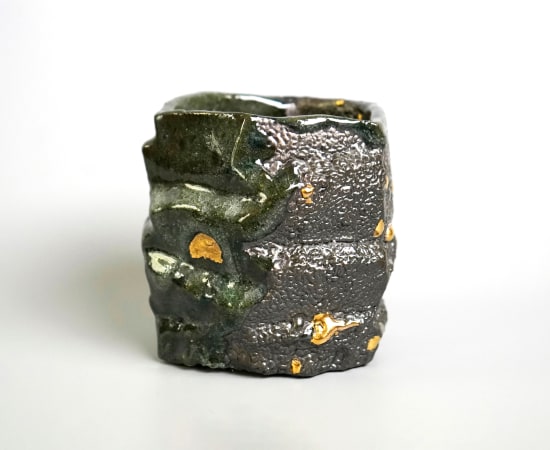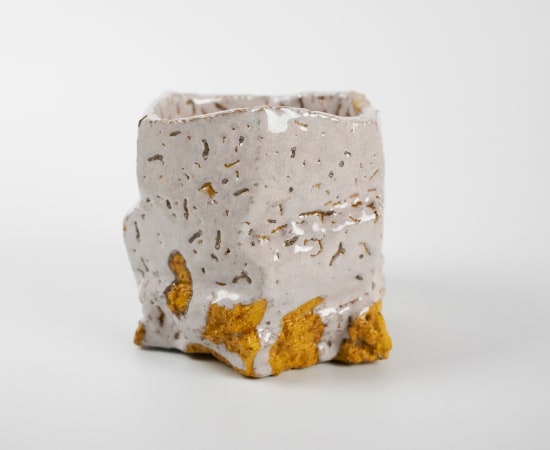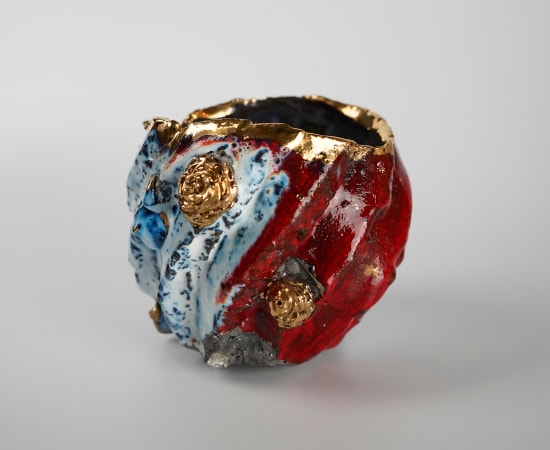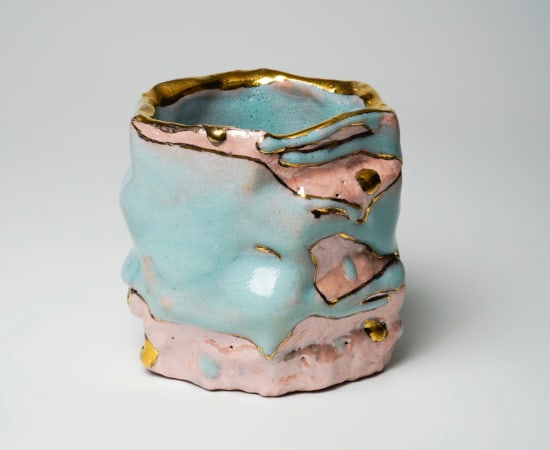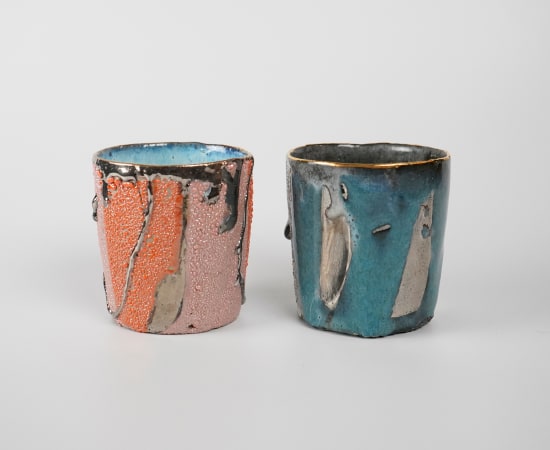Born in Tokyo in 1973, Ichikawa Toru is a modern & contemporary Japanese sculptor who specializes in innovating new techniques in the ceramic medium. He is known for combining the use of celadon glaze with Bizen clay, and uses natural color reactions to adorn both his functional and sculptural wares.
Bizen, Shigaraki, Tokoname, Seto, Echizen, and Tamba are the six ancient kilns of Japan. Bizen’s kiln site can be traced back to the 13th century, and generations of artists have developed a strong tradition from its fertile lands. Today, it has given us five Living National Treasures: Kaneshige Toyo 金重陶陽 (1896- 1967), Fujiwara Kei 藤原 啓 (1899-1983), Yamamoto Toshu 山本陶秀 (1906-1994), Fujiwara Yu 藤原 雄 (1932-2001), and Isezaki Jun 伊勢崎 淳 (b. 1936).
Many artists have tested their talents in Bizen, and only a few have risen from the rigor and knowledge this kiln demands. Fujiwara, Kaneshige, Isezaki, Kakurezaki Ryuichi, Mori Togaku are a few of the shining stars from that land among thousands of potters.
One of the stars from Bizen’s constellation of innovators has caught our eye and attention. Ichikawa Toru’s work is becoming a phenomenon. Ichikawa studied with one of Bizen’s luminaries and learned of its traditions: Kakurezaki Ryuichi 隠崎隆一 (b. 1950), who himself is famous for avant-garde forms in his craftsmanship. One can see the apprenticeship in his forms, which he takes forward with his daring interventions. A striking example of this is the variety of glazes on Ichikawa’s tea bowls. He marries celadon glaze with Bizen clay, and uses natural color reactions to adorn his sake cups and bottles. Colors usually seen on paintings take shape on avant-garde ceramic forms, offering a fresh perspective. Ichikawa presents us with a contemporary image of Japanese ceramics.

